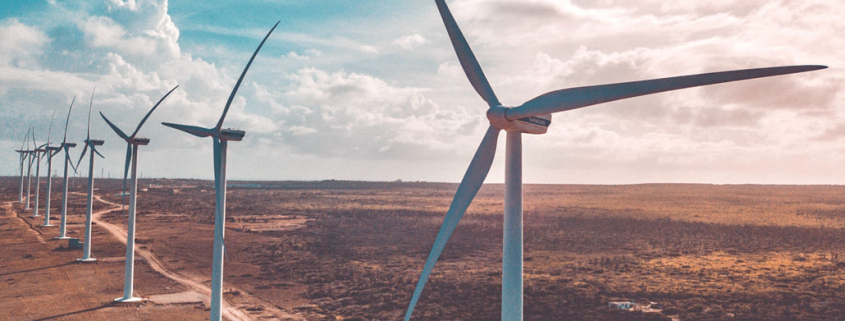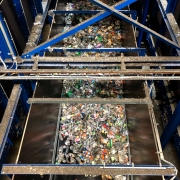Lithuanian Researchers Propose a Method for Wind Turbine Blades’ Recycling
A group of researchers from Kaunas University of Technology (KTU) and the Lithuanian Energy Institute propose pyrolysis to recycle wind turbine blades.
Wind turbine blades made from glass fiber-reinforced polymer (GFRP) laminate composites can serve for up to 25 years. After that, they end up in landfills – GFRP is recognized as hard-to-break-down. This has become a real challenge for the renewable energy industry. It is estimated that wind turbine blades account for 10 percent of Europe’s fiber-reinforced composite material waste. Researchers claim that by 2050, this blade waste will increase to around two million tons globally. With many countries banning composite materials from their landfills, recycling the used wind turbine blades becomes a challenge that researchers around the world are trying to solve.
Waste-free conversion
Due to its strength, shaping simplicity and low manufacturing costs GFRP composites are used for a multitude of purposes – for car manufacturing, maritime vessels, oil and gas production, construction, sporting goods and more. Aircraft, wind energy and electronics are among the industries, which use the GFRP most, with the global demand increasing annually by six percent.
“GFRP composites used for many industries including wind turbine blades manufacturing are either thermoset or thermoplastic. In either case, they roughly consist only of two components – fiber
and resin (in some cases with different micro or nanoparticle additions). As for the fiber, it usually is carbon fiber or fiberglass (the latter is cheaper),” explains Dr. Samy Yousef, a researcher at KTU, Faculty of Mechanical Engineering and Design.
During the experiments, the research group were applying pyrolysis (in presence of zeolite catalysts and without) to different batches of composites – fiberglass thermoset and fiberglass thermoplastic – measured the extraction of phenol (the primary component in the production of phenolic resins and the manufacture of nylon and other synthetic fibers) in each case. After that, they were analyzing the basic raw materials from each batch. The researchers also assessed the effect that the additive nanoparticles (such as carbon black) can have on the yield of useful components.
Although the yield of the components extracted during pyrolysis differs depending on the temperatures applied, the proximate measurement revealed that in all the cases the numerous volatile compounds (up to 66 percent) and fiber residue (around 30 percent) were extracted. The added fiber nanoparticles (Carbon nanotubes and graphene) increased the yield of phenol. The phenol can be used for further production of resin, while the fiber residue can have numerous applications after purifying it chemically – for reinforced concrete, polymer composites, flooring. “Our method is virtually waste-free with some small emissions, which is standard in this kind of conversion operation,” Yousef is quoted.
The experiments were conducted using the samples prepared at a laboratory that had compositions similar to those used for making wind turbine blades, and not the wind turbine blades themselves. Therefore, Dr. Yousef noted, there is a need to assess the effect of the paint coating, that the real turbine blades are covered with, to the results. However, he believes that it will not be significant. “We would of course be happy to receive a worn-out wind turbine blade, which is no longer usable, and to conduct our experiments with the samples obtained from the real object.” Currently, the research group is creating a model, which would allow to scale and calculate the wider economic and environmental impact of the results.
(Published in GLOBAL RECYCLING Magazine 2/2022, Page 35, Photo: Rabih Shasha, UNSPLASH)








